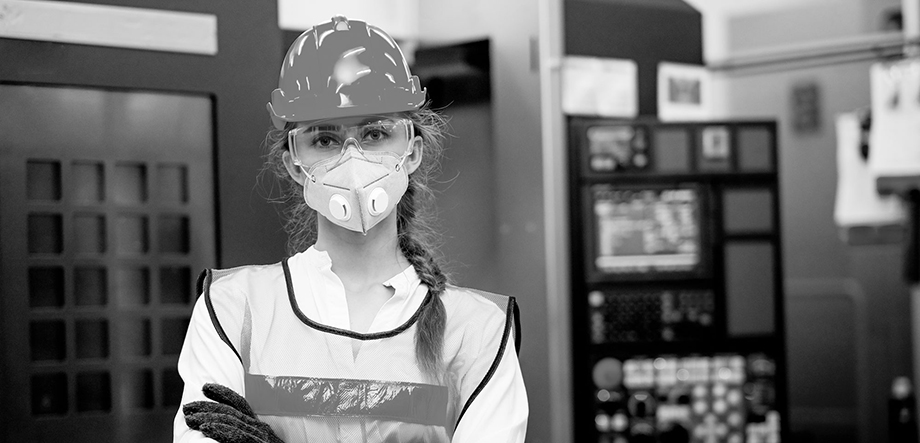June 08, 2020
Return to workplace ("RTW") will not happen overnight. It will involve a complex set of decisions and considerations, requiring employers to remain vigilant and nimble over time. COVID-19 outbreaks will likely continue to pop up in different areas across the globe until effective vaccinations proliferate. Scientific guidelines for best practices to mitigate COVID-19 are quickly evolving. For most employers, the first decision with respect to RTW will be who should return to the workplace and when. In making that decision, employers may want to choose to be guided by the simple rule:
This decision guide outlines some key questions on how to determine when portions of your workforce and the workplace are ready for RTW. This will vary for each employer, based on geography, industry and workforce demographics, among other factors.
Staging the RTW
Employers will likely opt to bring employees back to the worksite in phases. Such an approach allows for a quicker restart of essential functions and reduces the likelihood of spread across the full workforce if a positive case makes its way back to the worksite.
Below are the steps for employers’ consideration:

Define "essential" job classes
Department of Homeland Security, states and local authorities define essential industries. However, just because a business is considered essential, not everyone should work at the worksite; opportunities to work from home should continue to be offered to everyone who can do so effectively. Employers in non-essential industries can learn from those who have been at work about how to designate the most essential parts of the workforce when staging the RTW:
- Identify jobs (not people) where workers are unable to be productive at home due to the nature of their work.
- Identify jobs that are essential to restarting or continuing your business operations (e.g., production, security, maintenance). Engage business and production planners in creating essential on-site teams.
- Define the duration of RTW stages, using internal and external benchmarks that must be met before bringing a new wave of workers back to the worksite.
Decisions about workforce and workplace readiness for RTW should be made by multi-disciplinary teams of internal company leaders. Disciplines represented on these teams should come from multiple functional areas, including facilities, IT, legal, finance, occupational health, labor, HR/Benefits, CMO or population health officers, supply chain and logistics leaders.

Within the essential job classes, identify the people who can and cannot return safely
Consistency across your enterprise and clearly communicated guidelines are essential to ensuring fairness and compliance with laws. Any exceptions for individuals will need to be made in line with guidance from the EEOC, ADA and other countries’ anti-discrimination equal rights principle requirements.
Some considerations may include:
- Identifying vulnerable individuals who will have a harder time returning safely to the workplace,
including
those affected by:
- Health conditions that may put an employee or their household member at greater risk for adverse events related to COVID-19. These conditions should be determined in advance and communicated to employees to ensure fairness.
- School and childcare closures requiring one parent to remain at home.
- Lack of safe public transportation options.
- Anxiety about RTW.
- Establishing safe and confidential communication channels for people to opt out of RTW and for those who want to request to come back on-site.
- Clarifying leave policies for scenarios where the workplace is open, but employees opt out due to personal considerations.
- For employers that offer early retirement or unpaid leave options, be clear about the options available.
- Consulting with labor teams for any impact on employees represented by unions or works councils.
Deciding When a Workplace is Ready to Reopen
Look to local business reopening guidelines
- Local reopening guidelines may be based on factors such as hospital bed capacity, testing capacity, trend of new infections and availability of contact tracers. These guidelines may have greater geographical specificity than national /CDC guidelines.
Account for supply chain disruption
- For manufacturing sites, employers need to assess whether they have the raw materials and supplies necessary to resume work, which will depend on whether their supply chain, internal and contracted, is also up and running.
- If personal protective equipment (PPE) is necessary to resume work, assess your ability to procure PPE on an ongoing basis for the number of workers you plan to bring back on-site.
Ensure worksite readiness
- Assess the number of people you can bring back based on space needs and workspace design modifications necessary to enable proper distancing protocols.
- Establish criteria to be met by each site and reporting channels for site capacity that will inform staging of RTW.
- If screening procedures are required to enter the worksite, ensure that they are included in the site- readiness assessment.
Establish policies for on-site conduct, including addressing issues such as limits on the size of in-person meetings
Revisit business travel policies and protocols for those who have to travel for work. Initially, travel should be limited to essential roles

How Do I know if My Strategy Is Working, and What Data Should I use to Change Course, if Necessary?
It is important to recognize that this is a time of rapid change. All of the RTW policy and protocol decisions made by employers will require adjustments as guidelines emerge and the pandemic evolves. To monitor and readjust their return -to- worksite protocols, employers need to keep an eye on several data points, including:
- Evolving local and state ordinances impacting RTW;
- CDC and WHO and local guidelines as well as guidelines governing your industry;
- Testing, cases and mortality rates (by location) which could signal a need for additional precautions or temporary site closures;
- Self-reported COVID-19 symptom attestation rates by employees;
- Medical claims data, including any increase in flu or COVID-19 claims;
- Sick leave utilization, which could be a leading indicator that you have an underlying issue in a given worksite;
- Productivity metrics among employees working from home;
- Effectiveness of those at the workplace;
- Demands among your business units/ functions, which may suggest a need to retrain employees to support the teams in highest demand (i.e., reservation agents within the airline industry); and
- On-site clinic and virtual EAP resource utilization and employee hotline activity, which can help indicate the impact of RTW on employee mental health. Hotline and safe channels for employees to express their concerns and consistent application of guidelines on accommodations will be critical to assess employee concerns.
Additional data assets that can be accessed by employers to assist in ongoing RTW policy evaluation
Employers will have to develop or enlist the help of their partners in assembling a set of tools that can aggregate data essential to their decision- making. Such datasets may include:
- National databases on testing availability, which can help employees who exhibit symptoms get tested and diagnosed to trigger appropriate quarantine and contact tracing protocols.
- Disease heat maps at country, state, and zip code levels to understand disease hotspots.
- Watching neighboring states in areas where employees may commute from outside state lines is essential.
More Topics
Articles & Guides-
IntroductionReturn-to-Workplace Employer Guide
-
Part 1Return-to-Workplace: Who Should Return to the Workplace and When?
-
Part 2Return-to-Workplace: Entry Screening Requirements: Symptom Checkers and Temperature Checks
-
Part 3Return-to-Workplace: Employer Strategy: To Test or Not to Test
-
Part 4Return-to-Workplace: Workplace Readiness
-
Part 5Return-to-Workplace: Employee Communications Strategies and Lessons Learned
This content is for members only. Already a member?
Login
![]()
